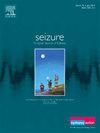Etiological features of status epilepticus of the in-patient cohort in Tibet: A retrospective comparative study
IF 2.7
3区 医学
Q2 CLINICAL NEUROLOGY
引用次数: 0
Abstract
Background
The etiology of status epilepticus (SE) in Tibet has not yet been reported. We aimed to establish the etiological baseline of SE in the Tibet Autonomous Region in China and compare it with a SE cohort from a regional neuroscience centre in Sichuan, Southwestern China to reveal whether there was a unique etiology distribution in the Tibetan region.
Methods
We retrospectively captured clinical data of patients diagnosed with SE in the People's Hospital of Xizang Autonomous Region from January 2015 to December 2020. Control data were recorded during the same period from West China Hospital of Sichuan University, Sichuan Province. Clinical and etiology evaluations were conducted by 4 neurologists using a standard case report form.
Results
A total of 619 patients were enrolled, among whom 318 were from the Tibetan cohort. The median age of the Tibetan cohort was 37.5 years, with 109 (34.3%) being women. The main etiology in the Tibetan cohort was uncontrolled persistent epilepsy (70.1%, N = 223). Compared to the control cohort, the proportion of patients in Tibet whose SE could be controlled was higher (97.5% vs 81.1%, p<.001) and the proportion of patients with refractory SE was lower (8.8% vs 35.2%, p<.001). Among the 223 patients with epilepsy who developed SE, 111 had never been treated with anti-seizure medication, and 52 (23.3%) were judged only to have received inappropriate treatment of epilepsy. Forty patients (17.9%) were only receiving treatment with traditional Tibetan medicine for epilepsy prior to admission. Patients with epilepsy of infectious etiology were seen in 37 patients in Tibetan cohort. In twenty-eight patients neurocysticercosis was identified as the cause of epilepsy. And in two patients, the cause of epilepsy was brain hydatid.
Conclusions
The main etiology of SE in the Tibet Autonomous Region was unsatisfactory seizure control in patients with pre-existing epilepsy, while a greater proportion of epilepsy due to infectious causes was noted. Improved education for physicians and patients is needed to improve the management of epilepsy and SE in this population.
西藏住院队列癫痫持续状态的病因学特征:回顾性比较研究。
背景:西藏地区癫痫持续状态(SE)的病因尚未见报道。我们的目的是建立中国西藏自治区SE的病因学基线,并将其与中国西南部四川省区域神经科学中心的SE队列进行比较,以揭示西藏地区是否存在独特的病因学分布。方法:回顾性收集2015年1月至2020年12月西藏自治区人民医院诊断为SE的患者的临床资料。同期对照数据来自四川省四川大学华西医院。临床和病因评估由4名神经科医生使用标准病例报告表格进行。结果:共纳入619例患者,其中318例来自藏族队列。藏族队列的中位年龄为37.5岁,其中109人(34.3%)为女性。藏族队列的主要病因是未控制的持续性癫痫(70.1%,N = 223)。与对照组相比,西藏地区SE患者可控制的比例更高(97.5% vs 81.1%)。结论:西藏地区SE的主要病因是既往癫痫患者发作控制不理想,感染性癫痫占比更大。需要加强对医生和患者的教育,以改善这一人群中癫痫和SE的管理。
本文章由计算机程序翻译,如有差异,请以英文原文为准。
求助全文
约1分钟内获得全文
求助全文
来源期刊

Seizure-European Journal of Epilepsy
医学-临床神经学
CiteScore
5.60
自引率
6.70%
发文量
231
审稿时长
34 days
期刊介绍:
Seizure - European Journal of Epilepsy is an international journal owned by Epilepsy Action (the largest member led epilepsy organisation in the UK). It provides a forum for papers on all topics related to epilepsy and seizure disorders.
 求助内容:
求助内容: 应助结果提醒方式:
应助结果提醒方式:


